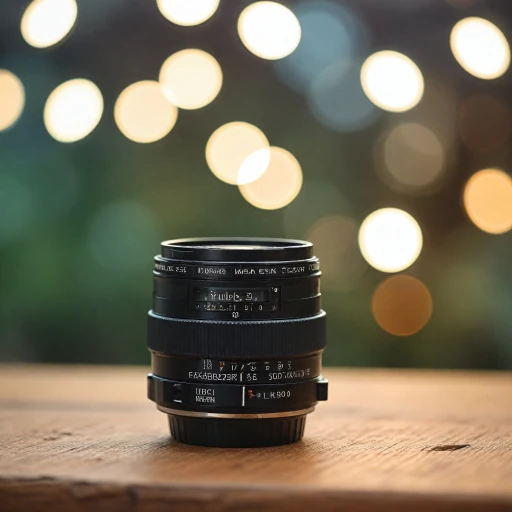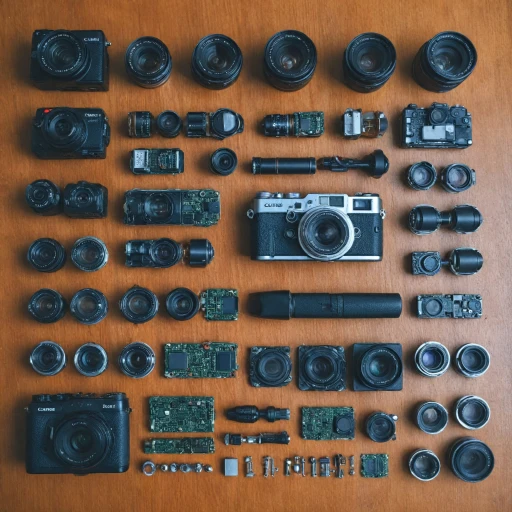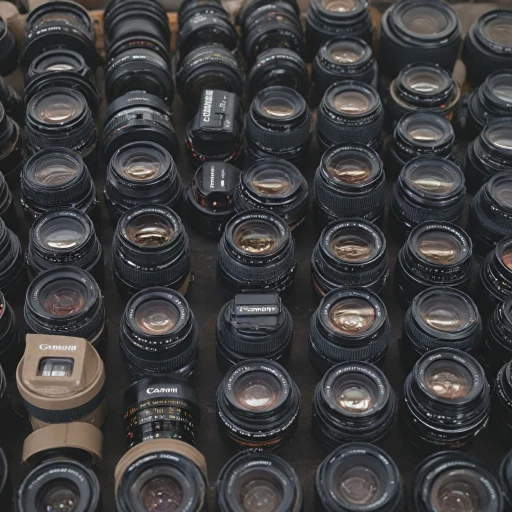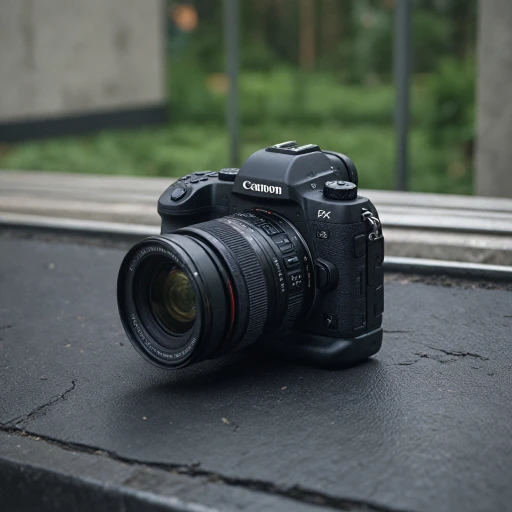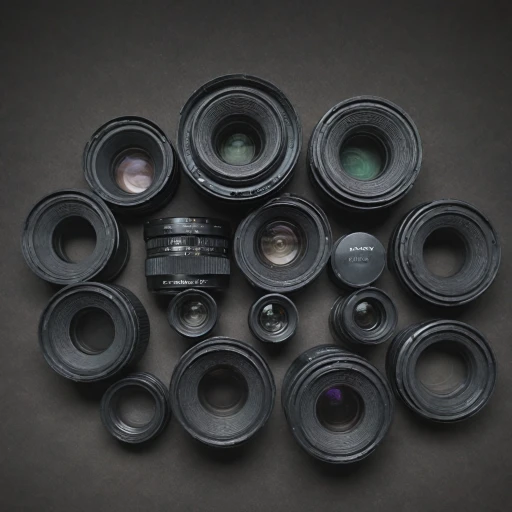Understanding Camera Radio Microphones
Decoding the Essence of Camera Radio Microphones
Camera radio microphones, especially wireless versions, have become indispensable tools in the video recording industry. They allow enhanced mobility and flexibility, facilitating uninterrupted audio capture even at a distance from the camera. The primary components of a wireless microphone system include the transmitter, receiver, and the microphone itself, often a lavalier mic due to its compact and unobtrusive nature. Wireless microphone systems operate at various frequencies, such as 2.4 GHz, which is commonly used because of its global compatibility. Depending on the product and brand—be it a leading name like DJI or more affordable options—prices and capabilities will vary. Key features tend to include audio quality, battery life, ease of use, and compatibility with different devices including iPhones and Android phones. For those worried about professional-grade output, features like noise reduction and noise cancellation play crucial roles in delivering clear sound. Mini microphones, particularly wireless mini models, are ideal for situations requiring stealth and portability. Moreover, the flexibility to use dual channel systems allows for recording from two separate sources simultaneously, enhancing versatility. For users in the United Kingdom or globally, a lavalier microphone system may couple with a camera and its USB interface, providing a seamless integration for audio and video tasks. While setting up a wireless mic system can initially present some learning curves, their benefits in noise management and freedom of movement far outweigh any initial challenges.Key Features to Consider
Essential Features for Selecting the Right Camera Radio Microphone
When diving into the world of camera radio microphones, several key features can significantly impact your audio recording experience. Understanding these features will help you make an informed decision, whether you're a seasoned videographer or a budding content creator.
- Wireless System: A reliable wireless microphone system is crucial for flexibility and mobility during recording. Look for systems operating on the 2.4 GHz frequency for minimal interference.
- Microphone Type: Consider whether you need a lavalier microphone for hands-free operation or a wireless mini mic for portability. Wireless lavalier microphones are particularly popular for interviews and presentations.
- Audio Quality: Prioritize products with noise reduction or noise cancellation features to ensure clear audio, especially in noisy environments. Dual channel systems can also provide enhanced audio quality.
- Battery Life: Check the battery life of both the transmitter and receiver. A long-lasting battery is essential for uninterrupted recording sessions. Some models offer a convenient charging case.
- Compatibility: Ensure the microphone system is compatible with your camera, whether you're using a DSLR, mirrorless camera, or even smartphones like iPhone and Android.
- Price and Value: Evaluate the price product ratio. While high-end models like the Rode Wireless or DJI Mic offer advanced features, there are also budget-friendly options available that provide excellent performance.
- Additional Features: Some systems come with unique features like USB connectivity for easy data transfer or night vision capabilities for low-light conditions.
Understanding these features will not only enhance your audio quality but also streamline your recording process, making it easier to capture professional-grade sound.
Benefits of Using Camera Radio Microphones
The Advantages of Camera Radio Microphones for Audio Quality
When it comes to improving the audio quality of your video productions, utilizing camera radio microphones presents several advantages. These wireless systems are designed to offer flexibility, high-quality sound, and practicality that enhance your overall recording experience. Below, we explore the key benefits brought by these products.
- Seamless Integration with Cameras
One of the most significant benefits of using a camera radio microphone is its compatibility with a wide range of cameras. Whether you're using a compact camera or a professional setup, these wireless systems easily integrate with devices through USB ports or external inputs, ensuring a hassle-free recording process. - High Fidelity Audio Recording
Thanks to superior noise reduction and noise cancellation technologies, these microphones deliver crisp and clear audio, minimizing unwanted background noise. This feature is particularly beneficial for outdoor recordings or busy environments, where external sounds can easily distract from the intended audio capture. - Flexibility and Range
The wireless nature of these microphones provides freedom of movement for both the speaker and the camera operator. With extensive range capabilities, such as those found in dual channel systems operating on the 2.4 GHz band, there's no need to worry about losing connection or experiencing interference. - Convenience and Portability
Products like the wireless lavalier mic and wireless mini systems are designed for portability, allowing creators to carry them easily for field shoots or travel. Many models include a compact charging case that extends battery life, ensuring your microphone system stays powered throughout extended sessions.
By integrating such advanced audio solutions, creators in the United Kingdom and beyond can elevate their video production quality substantially. Utilizing these cameras alongside other video enhancements such as night vision technology can result in videos that not only look great but sound superb, too.
Challenges in Using Camera Radio Microphones
Overcoming Hurdles in Using Camera Radio Microphones
When employing wireless microphone systems for capturing audio, one might encounter a variety of challenges that could affect the quality of the recording. Understanding these hurdles is vital for ensuring optimal audio results during video production.
A common challenge is interference. Wireless microphone systems operate within specific GHz frequencies, and congestion within this range can cause audio signal disruptions. This is particularly prevalent in urban environments where multiple wireless devices are in operation. Choosing a system with robust frequency hopping or automatic channel selection can mitigate this issue.
Another hurdle relates to battery life. Depending on the wireless mic, the battery may require frequent charging or swapping out, especially during prolonged sessions. Opting for devices with efficient power consumption and USB charging options can be beneficial. Many products, like the Rode Wireless or DJI Mic, now provide considerable battery life, but always ensure to plan for backup power sources.
The size and weight of the microphone and its transmitter can also pose challenges, particularly when using a mini lavalier microphone. These are designed for discretion but may still require secure fastening to prevent noise from movement. Effective noise cancelling technology within the mic system itself can also help in reducing ambient sound interference during recording.
Finally, the complexity and price of some wireless microphone systems may deter users unfamiliar with the technology. Though top-tier products offer superior audio quality and features like dual channel capabilities, they often come with a steep price tag. Assessing your specific needs—such as whether you require a wireless lavalier or a system compatible with both iPhone and Android—can guide you towards a product that balances cost and functionality.
In summary, while there are several challenges associated with using camera radio microphones, understanding these obstacles and choosing the right microphone system, like those available in the United Kingdom market, can significantly enhance your audio-recording experience.
Tips for Optimal Use
Maximizing Recording Efficiency with Proper Use
- Frequency Monitoring: Understanding the GHz frequency your system operates on is crucial for avoiding interference, especially in crowded wireless environments. Regularly check the frequency settings to ensure optimal audio quality.
- Battery Management: To prevent audio interruptions during recording, always check the battery life of both the transmitter and the receiver. Consider investing in products with extended battery life or a convenient charging case.
- Microphone Placement: For lavalier microphones, proper placement is essential for capturing clear audio. Ensure the mic is positioned close to the speaker’s mouth while avoiding clothing rustle and wind noise.
- System Synchronization: Pair your microphone system and cameras correctly to maintain a stable connection. Double-check that the receiver is properly linked to your wireless lavalier or wireless mini devices.
- Noise Reduction Settings: Utilize the noise cancelling features effectively to enhance sound clarity. Products like the Rode Wireless and DJI Mic are renowned for superior noise reduction capabilities.
- Adaptability to Devices: Ensure compatibility with various devices like iPhone and Android to leverage versatility in recording setups. Always check the connection method, such as USB or similar ports.
- Environmental Considerations: Be mindful of surrounding noise and adjust your system settings accordingly to mitigate any undesirable audio capture.
Popular Camera Radio Microphone Models
Leading Wireless Microphone Systems for Cameras
When selecting the best wireless microphone systems for your camera, consider options that offer superior sound quality, user-friendly features, and durable performance. Here's a look at some popular models in the market:
- Dji Mic Wireless System: Known for its impressive noise cancellation capabilities and dual-channel transmitter, the DJI Mic is favored by videographers globally, including in the United Kingdom. Its battery life and ease of use make it a top choice for high-quality audio recording.
- Rode Wireless Go: This wireless mini microphone set is celebrated for its compact design and reliable wireless system performance. It's perfect for on-the-go creators looking for an efficient receiver and transmitter with a reasonable price product.
- Sennheiser EW G4: With an emphasis on noise reduction and audio clarity, this microphone system provides professional-grade sound. Its usb compatibility and robust range offer great flexibility for varied recording needs.
- Audio-Technica System 10: Operating in the 2.4 GHz range, this system offers high-fidelity audio recording with minimal interference. Its ease of setup and consistent performance make it a reliable choice for diverse video projects.
- BOYA BY-WM4 PRO: This wireless lavalier microphone set provides exceptional noise cancelling features. It's a smart pick for budget-conscious users who still want quality audio capture on iphone and android devices.
Each of these products excels in different scenarios, catering to varied needs when it comes to quality audio recording for cameras. Choose based on specific requirements, considering factors like price, functionality, and battery performance.

